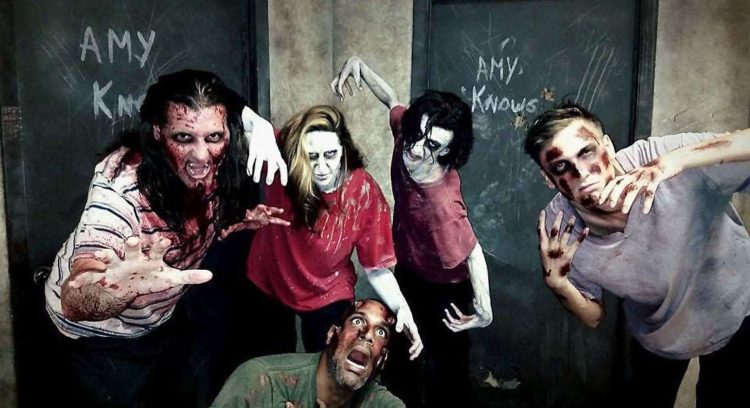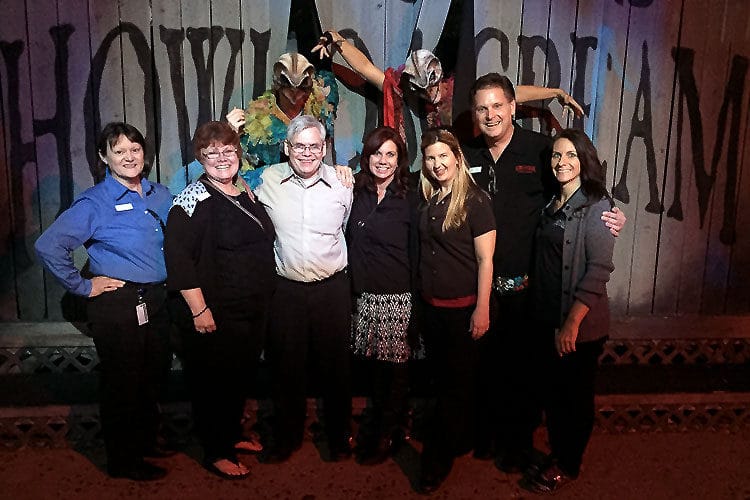Who Lives in My World?
When I was growing up, my friends and I would get together and pretend. Sometimes we’d recreate the world of our favorite television shows and, other times, we’d become zookeepers or astronauts. But whether we were performing in massive rock concerts (by lip-syncing to Partridge Family records) or traveling into space, the basic rules were the same. We’d agree upon the parameters of the world, give ourselves distinctive character traits or skills that made us more interesting, and then play within that world. We’d let the stories unfold as our imaginations guided us. These elevated and often epic journeys that took place in my parents’ basement were my first introductions to acting in immersive theatre. None of these pretend scenarios had an audience, just us, living in the moment.
By applying these same basic “rules of play” to acting in immersive performance pieces, producers and directors can create complex environments guests can visit. The audience won’t be just watching; they’ll be part of the world.
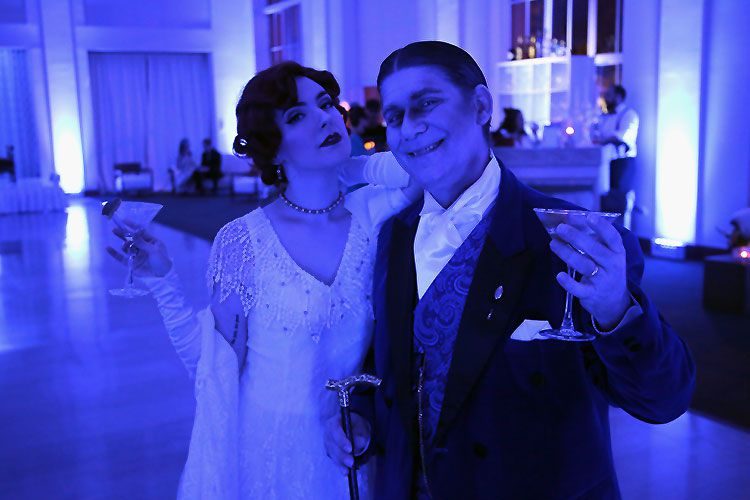
Building the Playground
Before any actor auditions, the first challenge falls to the writer and creative team. They must establish the rules of the world these characters will live in. This includes social expectations, technology, and, sometimes, even the basics of physics.
In some scenarios, these rules aren’t too different from our own. Realistic escape rooms, for example, may follow many of the same rules as our current reality. These situations are very realistic. Guests aren’t asked to suspend too much disbelief. They may never have been locked in a military bunker, but they know it could happen. They also don’t expect they’ll be able to escape by using a magic wand. These scenarios allow guests to experience real-world situations in a safe yet elevated state.
Sometimes, the rules are dictated by the time. When visiting a Renaissance Faire, for example, guests expect to be transported back in time. The inhabitants’ behavior is affected by the social hierarchy, and his directly affects the performances. The foppish prince may be drenched in perfume to cover up the rank odor which permeates his clothing, or the beggar may be sitting in a hole under a shredded rag to protect him from the sun. Historic settings require a great deal of research. The rules of this reality will guide and create the emotional life of the performers.
Most times—especially with haunted attractions—the creators must develop an alternate reality. This is the world where we answer the question, “What if?” This allows the writer to use existing rules and then bend them to help convey the story. This approach is often best served by using commonly accepted folklore or urban legend. By using familiar content, it reduces the need for elaborate exposition. This approach is also standard when creating Christmas attractions. “What if Santa moved his workshop to our town for the holiday season?”
The most ambitious approach is to create a world that follows no existing rules. These “start-from-scratch” scenarios can be unpredictable. From an acting standpoint, it’s important that the key elements of this fantasy world are well-enough defined in the performers’ minds they can make the right choices.
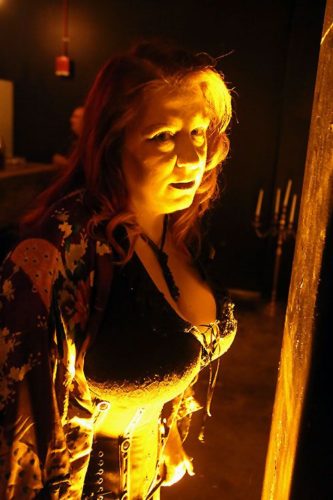
Planning the Journey
Besides defining the world, the writer must also provide a “map” to navigate the emotional journey. This isn’t a linear progression, as many immersive experiences don’t follow a prescribed pathway. It’s important, however, that there be key plot elements defined throughout the experience. These may be cleverly woven twists and turns that are intellectually challenging or visceral experiences that impact the guests emotionally. Either way, they need to be identified and assigned to either actors or locations. Most immersive experiences work to find a balance between structure and improvisation. These defined plot elements provide milestones for the actors and the guests to mark their progress.
Well-defined characters and relationships are also essential in strong immersive theatre. Who are these people and who are they to each other? It’s important to have these relationships defined early, but “date” the concepts; don’t “marry” them yet. It’s a good idea to incorporate the actors’ idiosyncrasies and input. By doing this, the characters become more honest, and the performers find it easier to live as these personas throughout the night. Not that one should hand the keys over to the inmates, but that the creative direction should remain flexible throughout the casting and rehearsal process.
The final character to be defined is the audience member. In immersive theatre, the guest isn’t passive, because they’re another inhabitant in that world. Sometimes, this role varies from guest to guest and we assign it as the performance begins. This can be as basic as a Murder Mystery Dinner or as complex as “The Republic” or “When Shadows Fall” by Pseudonym Productions. In many cases, the guest character is more generic. In Punchdrunk’s “Sleep No More,” for example, the audience is masked, so everyone looks the same. They’re used as everything from assistants to witnesses to common rabble. All the while, they’re on a personal journey of exploration to reveal their own experience. By identifying the character of the audience, the experience becomes more than a theatrical piece guests walk through. It’s interactive.

Populating the World
The world of experience has been created. The playground is built. Now it must be filled with actors who can bring it all to life. Although each piece may have specific specialty skills required (dance, stage combat, etc.), the best cast members are honest actors who understand technique but don’t lead with it. They should also can improvise and live “in the moment.” They should be courageous and willing to explore. Some immersive theatre professionals believe it’s better to cast real people and not trained actors. This may work for some projects, but trained actors will alter and refine their characters while untrained cast members will only be able to “be themselves.” It’s also a good idea to look for actors with film training and experience. Acting for film differs greatly from stage acting. It requires a much more subtle approach. Since immersive theatre is more intimate, this camera-ready quality works well. These are the kinds of inhabitants that can breathe life into any fantasy world.
The audition process is the most crucial step in the director’s journey. If she or he can place the right performers into the right roles, the rest of the process unfolds on its own. Auditioning for immersive or environmental theatre differs from auditioning for traditional theatre, and there are as many ways to handle the casting process as there are projects.
For “The Vault of Souls” (an immersive evening of elegant fear which ran seasonally in 2015, 2016, and 2017), the audition process was simple. It was a group audition of about 10 people at a time where I asked them to “tell me a scary story” and then be prepared to improvise. That was all the direction I gave them before the audition. If someone asked for clarification, I was intentionally vague. The reason I was so vague is I needed to see how these people would handle performing “without a net.” I wanted to see what their instincts were. It was less important to me what kind of story they told than how it affected the other people in the room and me.
After everyone had shared their stories, I asked some of them to tell the story again but, this time, they had to include the audience (the other people auditioning). They had to have them reinforce the story. Here’s where the improvisation skills came into play. I was asking them to take prepared material and change it. This twist showed how easily they could approach and engage strangers. It also gave me an idea of their physicality. We forced them to “break the fourth wall” and interact. From these simple actions, I could cast the 60 performers I needed.
This is not the only way to audition for immersive theatre. Every project and every director will require different skills and techniques. Some other interesting options might be to improvise sample role-playing between potential cast members or holding auditions in the performance space itself and encouraging the participants to “find their space.” However, the audition process is handled, it’s important that the actors show the qualities needed for the specific piece, that they appropriately connect with the audience, and that they can react in the moment.
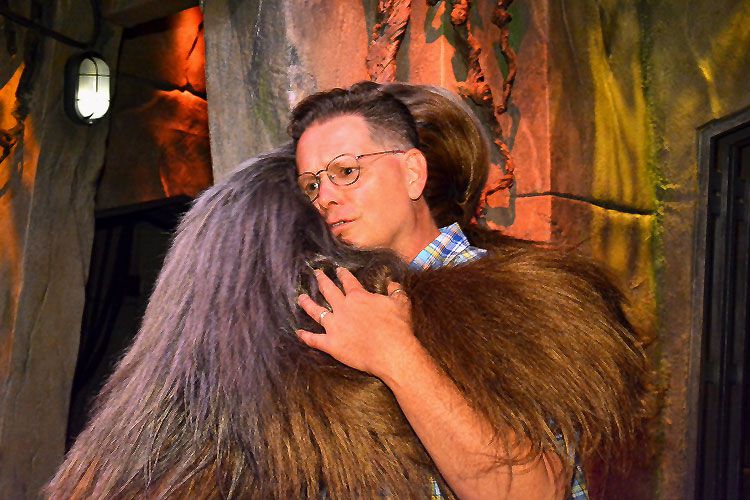
The rehearsal process for immersive theatre is also unique. It contains some of the same elements as a traditional rehearsal but not many. There are few specific lines to learn. It also limits blocking or prescribed stage movement. The real focus of the rehearsal process for the actor is developing rich characters and establishing relationships with the overall story arc, the other characters (including the audience), and even the surroundings. Therefore, casting the right team is so essential.
We break the training into working on three different activities; story elements, day-in-the-life moments, and crowd control techniques. Story elements are those wonderful plot points created by the writer. They establish how and where this character fits into the overall experience. They also help guide the guest on their journey of discovery. For the actor to convey these story chunks, they need to understand them. They also need to know how they fit into the rest of the story. During the rehearsal process, the actor should develop ways to share these key points through words and actions. What can they DO to explain this part of the story? Or better yet, what can they get the audience member to DO? This part of the rehearsal process requires both alone time for the actor(s) to try things and make mistakes and collaborative time with the director to make sure these moments fit into the overall piece.
Day-in-the-life activities are what the character does when he or she is alone. Since the guests can arrive at any time, it’s important to rehearse things to be doing when guests show up and when they leave. Nothing destroys the moment more than catching an actor out of character checking their cell phone or sipping from a Starbucks cup (look what happened on “Game of Thrones”). These activities often involve the performance space or even some hand props. It’s important for the actor to have a relationship with these objects, so they understand how to use them. By rehearsing these day-in-the-life moments, the actor is never just waiting for the next audience member to arrive. They always have something to do.
The most practical side of the rehearsal process is learning crowd-control techniques. Sometimes actors will need to draw attention to themselves or away from others or even to move guests along. These should always be integrated into the character and help reinforce the world that’s been created. In emergency or safety-sensitive situations, character should be dropped to address the issue. By identifying and rehearsing crowd-control techniques, these will become second nature to the performer and be fully integrated into their character.
At the end of the rehearsal process, after the director and the actor have identified and perfected the performance elements, set them. Agree that this is how this character will be performed unless a specific change is approved by the director or stage manager. This leads to a more consistent product. It also places the responsibility for the content on the management team’s shoulders and not the actor’s. “Content creep” is always likely, especially in longer running pieces. This slow change of direction isn’t noticeable at first, but, over time, it can morph the project into something else. Not that immersive theatre pieces can’t grow throughout the run. They should, but the change should be intentional.

Maintaining the Magic
When the rehearsal process is over, it’s time to add the final cast member…the audience. Unlike traditional theatre, immersive theatre engages and relies on the audience as an essential element. It’s often best to make the end of the rehearsal period either a “preview” or “invited audience” situation. This allows the actors and the director (not to mention the technicians and producers) the opportunity to see the show as it will happen. Things that looked brilliant on paper may not work with real guests. It may be necessary to find different ways to communicate certain things because real guests just don’t get it. This is equivalent to a final dress rehearsal. ALL the parts and pieces are in place so that final polishing can be done.
After opening night, it’s still important to observe and maintain quality. This is left to the Stage Manager, so keep them involved in the training process. In immersive pieces, it’s often difficult to observe the performances. Some shows have full video observation of each room, and some do not. If the project is lower on the tech scale, observe the performances while posing as a guest. Keeping an eye on the actors and providing ongoing encouragement and feedback makes them more responsible for the consistent quality of their work. It also makes them feel safer (especially in haunted attractions).
Another great way to gather feedback is to listen to guests as they leave the experience. They’ll want to talk about the best and the worst things they’ve just seen. Listen and react accordingly. Making a guest feel empowered to make a change will help build a patron for life.
Protecting the Pretend
The world of entertainment is changing. More and more guests want cooperative and immersive experiences that change based on their interaction. Immersive experiences are no longer a quirky theatrical experiment. They’ve reached the mainstream with installations like Universal Studios’ “The Wizarding World of Harry Potter” and Disney’s “Galaxy’s Edge.” By remembering childhood games of pretend and applying those same rules, actors and directors can be better prepared for the next wave of audience interaction.
About The Author
Scott Swenson
For over 30 years, Scott Swenson has been bringing stories to life as a Writer, Director, Producer and Performer. His work in Theme Park, Consumer Events, Live Theater and Television has given him a broad spectrum of experiences. After 21 years working with SeaWorld Parks and Entertainment as the Director of Production, Scott formed Scott Swenson Creative Development LLC. Since then he has been writing live shows, creating and implementing themed festivals and developing communication based training classes. Much of Scott’s work has focussed on seasonal entertainment. He was co-creator and Creative Leader for the first 15 years of the “Howl-O-Scream” event at Busch Gardens Tampa, during which time he wrote and implemented over 50 haunted houses, shows and scare zones. From 2014 to 2017, he was the Writer and Creative Director for the historically based atmospheric theatre piece, “The Vault of Souls”.

